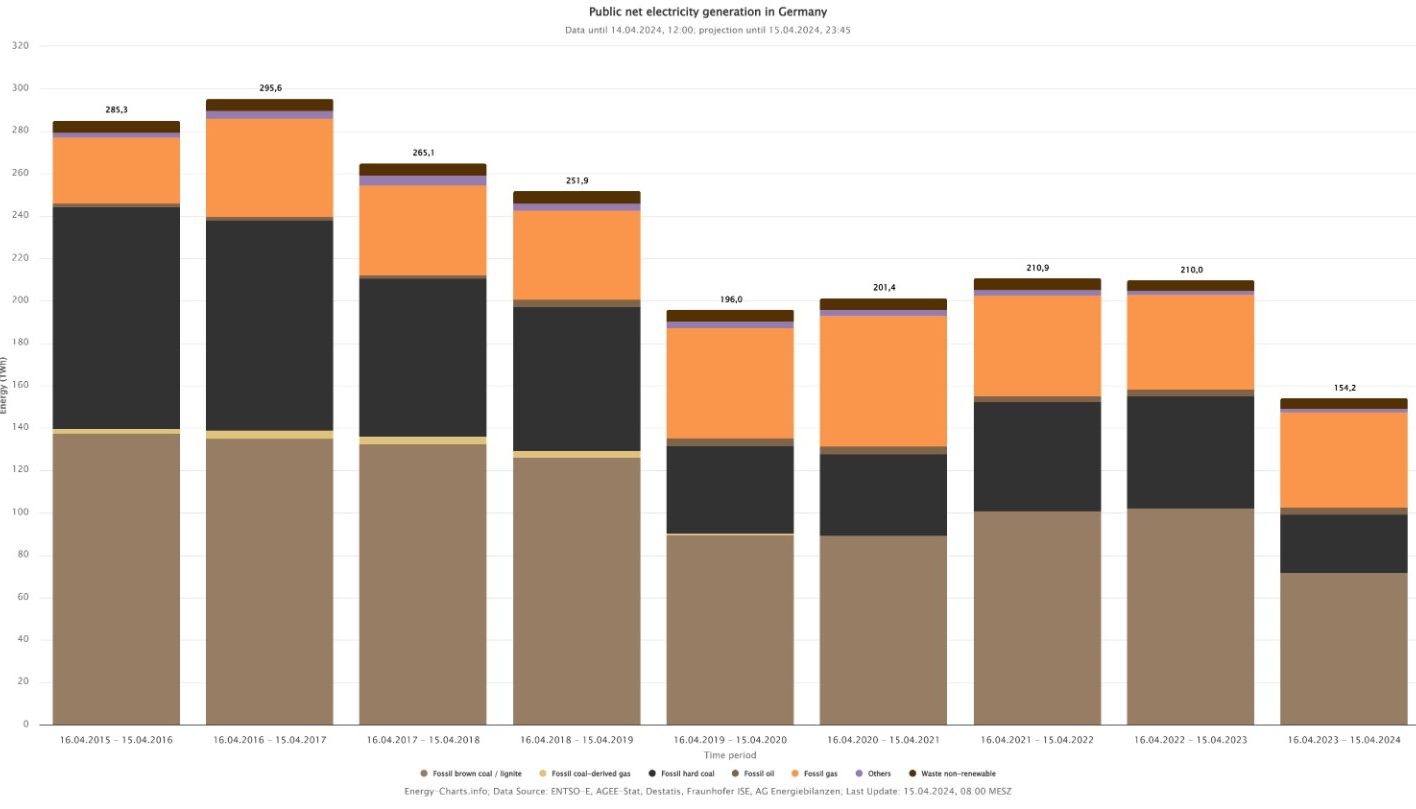On April 15, 2023, the era of nuclear power in Germany came to an end with the shutdown of the last three nuclear power plants in Emsland, Neckarwestheim and Isar. On the first anniversary of the phase-out, the Fraunhofer Institute for Solar Energy Systems ISE takes stock: Nuclear power has been replaced by in-creased generation from renewable energy sources. Electricity generation from fossil fuels decreased and was offset by increased electricity savings, self-consumption from own photovoltaic systems, a reduced load and imports. Electricity prices fell to the level of 2021. The analysis is based on the data platform energy-charts.info
In the last year of operation from April 16, 2022 to April 15, 2023, German nuclear power plants generated 29.5 TWh of electricity and supplied 6.3 percent of net public electricity generation. Even after its shutdown, nuclear power continues to cause debate. In view of increased electricity imports in summer 2023, it was claimed that Germany had become an electricity importer or that nuclear power had been replaced by coal.
“In fact, electricity generation from nuclear power was replaced by renewable electricity generation. In the first year without nuclear power, around 270 TWh of renewable electricity was generated, 33 TWh more than in the same period last year. Our electricity mix is cleaner than ever before,” explains Prof. Bruno Burger, who is responsible for Fraunhofer ISE’s energy-charts data platform. Between April 2023 and April 2024, renewable energy accounted for 58.8 percent of the electrical load, the sum of net public electricity consumption and grid losses, in Germany.
Decline in Fossil Fuels and Load
While electricity generated from renewables has increased, electricity generation from fossil fuels declined. In the first year without nuclear energy, around 154.4 TWh of electricity was generated from coal, natural gas, oil and waste. This is significantly below the figures from previous years and 26 percent below last year’s figures over the same period. Their share of net public electricity generation fell to 33.7 percent. Reasons for this include the high prices for natural gas and hard coal and the high CO2 certificate costs. The load also fell by 2.1 percent to 459 TWh. There are many reasons for this, for example, electricity savings in the industrial and private sectors, a decline in production and increased self-consumption of photovoltaic electricity.
Imported electricity cheaper in summer
In the first year without nuclear power plants, energy imports increased although Germany had sufficient power plant capacity to always supply itself. In Germany around 75 GW of load, the sum of the electricity consumption and grid losses, was offset by around 90 GW of non-fluctuating generation capacity, in addition to the renewable generators of solar (approx. 85 GW), wind (approx. 70 GW) and pumped storage (approx. 9.5 GW). “The fact that we imported 23 terawatt hours of electricity, compared to 21.3 terawatt hours of exports in the previous year, is not due to a lack of generation capacity in Germany bur rather to the significant drop in electricity prices on the exchange. In summer 2023, renewable power plants in the Alps and in Denmark, Norway and Sweden generated cheap electricity, making German’s coal-fired power plants uncompetitive. As a result, a lot of electricity with low greenhouse gas emissions was imported to Germany,” explains Prof. Burger. In addition, many nuclear power plants in France were reconnected to the grid in the summer following outages in 2022, and they exported surplus electricity.
Further decline in exchange electricity prices
Electricity prices on the exchange (day-ahead) have fallen to the level of April 2021, i.e. lower than before the war in Ukraine. The average monthly day-ahead exchange electricity price in April 2024 is €48.39/MWh or 4.8 cents/kWh. Household electricity prices have also recovered and are at the level of June 4, 2021 for new customers.
The analysis covering the period from mid-April 2023 to mid-April 2024 shows that the loss of nuclear power in Germany could be well compensated. Contrary to claims, the increase in imports was not due to a lack of generation capacity in Germany, but rather due to the favorable electricity generation prices of renewable power plants in the Alps and Scandinavia.
Press Contact:
Claudia Hanisch
Communications
Fraunhofer ISE
Heidenhofstr. 2
79110 Freiburg
Germany
Phone +49 761 4588-5448



























